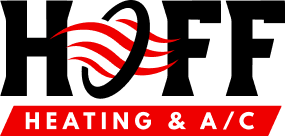How HVAC Impacts Humidity Levels in the Home

Living in O’Fallon, MO, means you deal with high humidity during the summer. In the winter, it’s not uncommon for low humidity to dry out the air and cause discomfort. Fortunately, some of the best ways to control indoor moisture are with your heating and cooling equipment and other helpful strategies.
Your Air Conditioner’s Impact on Indoor Humidity
Many people look at air conditioners as a way to cool down their homes. What they fail to realize is that cooling systems can also help with humidity. They do this by circulating warm air over cold evaporator coils and condensing moisture. With less moisture in the air, the home won’t feel so stuffy and uncomfortable. You won’t have to lower the thermostat as much, which can save money on cooling costs.
However, if the AC isn’t the right size for your house, it won’t do a good job of removing humidity. An oversized unit will cool the house quickly, but shut off before it has time to remove moisture. An undersized system will run constantly but still struggle to dehumidify, making your space feel damp. To ensure you have the right size AC, you should let a professional help you select a unit. You should also let them do the installation. A faulty installation could hinder the system’s ability to balance humidity effectively.
Your Heater’s Effect on Indoor Humidity
Your heater affects indoor moisture by reducing humidity and drying out the air. This can make the air feel uncomfortable. You might notice static electricity or dry skin. Some people even experience nosebleeds and chapped lips as a result of the dryness. The lack of moisture isn’t just uncomfortable; it can also damage wood furniture and hardwood floors. If someone in the home has allergies or asthma, the dry air may make their symptoms worse by irritating their nose and throat. A professional heater installation ensures efficient performance and better humidity control.
Best Ways to Balance Indoor Humidity
The ideal humidity level inside your home is between 30% and 50%. This will help prevent dry skin, irritated sinuses, static electricity and damage to wood furniture. There are several tips you can use to achieve and maintain a balanced indoor environment year-round.
Whole-Home Dehumidifiers
A whole-house dehumidifier is a device that attaches to your HVAC system and draws moisture out of the air as it flows through your home’s ducts. For homes that become musty in the summer or show indications of mildew and mold, this is a fantastic choice. It has a drainage system that removes moisture from every room in the house. This is much more effective than a portable dehumidifier that only targets a single room at a time. And because it reduces the amount of moisture in the air, your air conditioner can operate more effectively.
Whole-Home Humidifiers
A whole-house humidifier provides moisture to the air when it becomes too dry. These systems distribute mild, humid air throughout the whole house by connecting to your heating system. In the winter, this prevents your home from being too dry. You’ll be able to turn down the thermostat and enjoy a cozier house without breaking the bank. A whole-house humidifier also helps alleviate static shocks, scratchy throats, dry skin and other cold-weather complaints.
Keep the Air Filter Changed
Your heater and AC both have an air filter. Keeping these filters changed regularly is of the utmost importance. Dirty filters restrict airflow, making it harder to keep a consistent temperature, which hurts moisture control. Swapping out the filters every one to three months will help the HVAC perform better. If you happen to have a ductless mini-split setup, you’ll need to change the filter every two weeks.
Professional HVAC Maintenance
You can improve your system’s ability to balance moisture with regular HVAC maintenance. A technician will clean the coils, look at the drain lines and make sure the system works as it should. This ensures the air conditioner can remove moisture effectively and that your heater doesn’t cause overly dry indoor air. We suggest professional HVAC tune-ups at least once a year.
Upgrade Your Thermostat
If you don’t have a programmable or smart thermostat, you need one right away. A programmable version helps with moisture control by reducing unnecessary HVAC run time. Smart models do the same but also come with many other benefits for humidity balancing. Many of them sync with sensors that monitor indoor humidity levels and adjust the system accordingly. Some can even learn your schedule and make real-time adjustments so you achieve the most balanced and efficient indoor environment possible.
Ventilate with Exhaust Fans
Using exhaust fans helps with humidity, especially in places like bathrooms and kitchens. The fans will suck out moist, warm air when you’re cooking or showering. This reduces humidity in the air and prevents things like mold growth, peeling paint and musty odors. Exhaust fans are a simple but effective way to control indoor moisture, so your home stays healthier and more comfortable.
Open Windows Occasionally
Opening a window or door on a dry, windy day allows excess moisture to escape. This can be particularly of value when you’re cooking or taking a hot shower. However, you must be wary of doing this on hot, muggy days when the humidity level outside is high.
Seal Air Leaks
When doors or windows have air leaks around them, this can let moisture infiltrate your home. Sealing these leaks with weatherstripping or caulk will help avoid excess humidity and mold growth. It will also improve the HVAC system’s performance by helping it maintain a consistent indoor climate more efficiently.
Install a Whole-House Ventilation System
In addition to a whole-home humidifier or dehumidifier, you might need a whole-house ventilation system. This type of setup is exceptionally valuable in houses that are tightly sealed or lack adequate airflow. The ventilation system will remove stale, humid air and bring in fresh, drier air throughout the whole house. Over time, this helps maintain balanced humidity levels and improves overall air quality.
Insulate Cold Surfaces
Condensation on windows and pipes can increase indoor humidity levels. This happens a lot in O’Fallon during the winter months because of cold outdoor temperatures meeting warm indoor air. As the extra moisture builds up, it can cause foggy windows and wet spots. Insulating cold pipes and adding window film is a great way to reduce the condensation and boost humidity control.
Monitor with a Hygrometer
A hygrometer is a simple-to-use tool that lets you monitor indoor humidity levels. If you notice levels are too high or too low, you’ll know to switch on the humidifier or dehumidifier. Many smart thermostats come with built-in hygrometers, which simplifies humidity tracking.
Hoff Heating & AC specializes in helping homeowners just like you achieve better moisture control. We offer HVAC installations for systems of all types, including ductless versions. Our maintenance services boost humidity control by ensuring proper airflow year-round and optimal indoor air quality. Call Hoff Heating & AC now to book reliable HVAC services in O’Fallon.

 Call Us Today
Call Us Today
